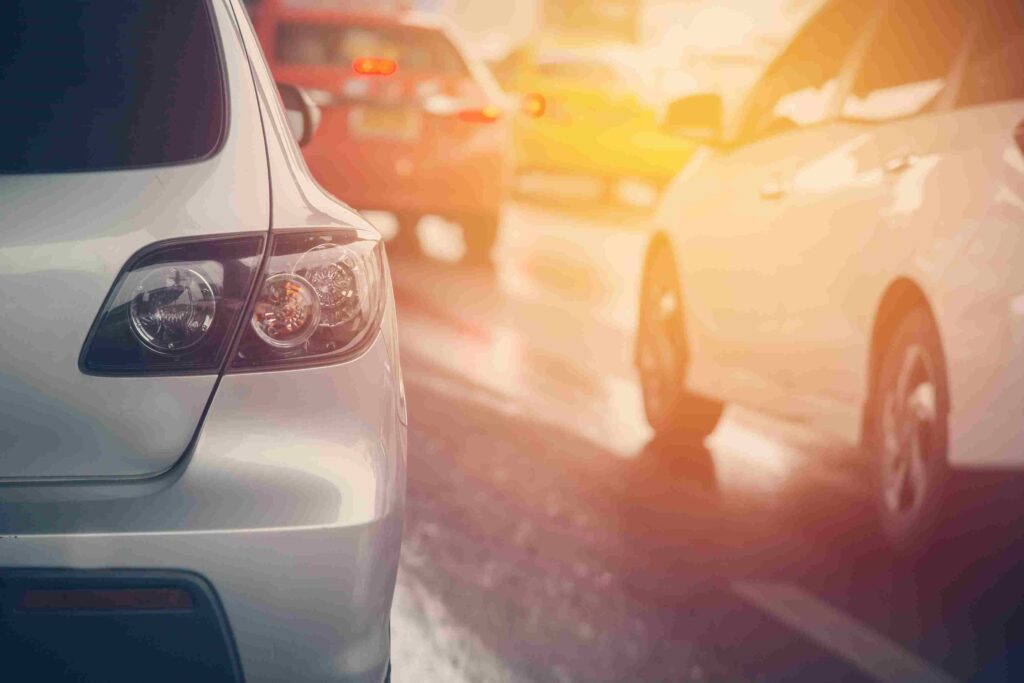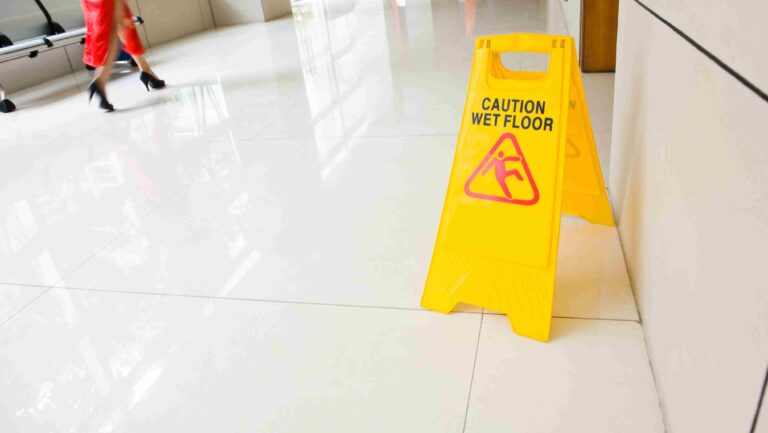Fort Worth’s sunrise and sunset hours might create stunning views, but they’re also among the most dangerous times to be on the road. Whether you’re heading to work at dawn or commuting home at dusk, the glare, shadows, and changing visibility can significantly increase your risk of a serious crash.
At Patterson Law Group, our accident lawyers in Fort Worth have seen firsthand how these lighting conditions can lead to devastating car accidents. Understanding why these times are so risky—and what you can do to protect yourself—could be the difference between a safe trip and a life-altering accident.
Why Sunrise and Sunset Create Unique Driving Risks
Although they only represent a small fraction of the day, sunrise and sunset account for a disproportionate number of car accidents. The “sun glare” that occurs when the sun is low on the horizon can temporarily blind drivers, obscure road signs, and reduce reaction time.
Here’s why these times are uniquely dangerous:
- Sun Glare: The low-angle sun beams directly into drivers’ eyes, especially when heading east in the morning or west in the evening. It can reflect off windshields, mirrors, or even the road.
- Rapid Light Changes: During twilight hours, lighting conditions can change drastically in seconds, making it harder for the human eye to adapt quickly.
- Increased Traffic Volume: These hours coincide with the busiest commute times, adding more vehicles, pedestrians, and cyclists to already challenging conditions.
- Driver Fatigue: Morning drivers may not be fully alert, while evening drivers may be tired from a full day, which can further impair judgment and reaction time.
Statistics: Sunrise/Sunset Accidents by the Numbers
Sun glare is a contributing factor in thousands of car accidents every year. According to the National Highway Traffic Safety Administration (NHTSA), sun glare causes approximately 9,000 crashes annually in the U.S.
Local data from the Texas Department of Transportation (TxDOT) also indicates a spike in accidents during these twilight hours:
- Fatal crashes in Texas are 14% more likely to occur during dawn or dusk.
- Tarrant County ranks among the top counties in Texas for crashes related to glare.
- Many of these incidents occur between 6:30 and 8:00 AM and 5:30 and 7:30 PM, aligning closely with sunrise and sunset times.
Real Scenarios: How Sunrise and Sunset Cause Crashes in Fort Worth
We’ve handled cases involving:
- Rear-end collisions caused by drivers not seeing brake lights due to glare
- T-bone crashes at intersections where drivers misjudged another car’s speed or presence
- Pedestrian injuries in neighborhoods where shadows and backlighting obscured visibility
- Highway accidents occur when drivers change lanes blindly or fail to see merging vehicles
Many of these crashes happen on roads like I-30, I-20, and Highway 287, where long straightaways face directly into the rising or setting sun. City streets, such as Camp Bowie Boulevard and Lancaster Avenue, are also high-risk during these hours due to their east-west orientation and high traffic volume.
Common Injuries from Glare-Related Crashes
The types of injuries we see most often include:
- Whiplash and soft-tissue damage from rear-end crashes
- Broken bones and internal injuries from intersection T-bones
- Head trauma and spinal injuries in high-speed collisions
- Pedestrian or cyclist trauma, often involving multiple impact points
These injuries can be life-altering and result in significant medical costs, time away from work, and ongoing therapy or rehabilitation.
How Fort Worth Drivers Can Stay Safe During Sunrise and Sunset
Preventing an accident during these hours requires proactive awareness and smart driving habits. Here are our top tips:
- Use Sunglasses With Polarized Lenses: Regular sunglasses help, but polarized lenses are even more effective at reducing glare.
- Keep Your Windshield Clean—Inside and Out: Dust, streaks, and smudges can amplify glare and reduce visibility.
- Use Your Sun Visor Wisely: Even if it only blocks a portion of the glare, it can help your eyes adjust more easily.
- Slow Down and Increase Following Distance: Give yourself more time to react in low-visibility situations.
- Turn on Your Headlights: Even if it’s not fully dark, headlights can help other drivers see you more clearly.
- Plan Alternate Routes: If possible, avoid roads that run directly east-west, especially during seasonal transitions when sun angles are worst.
- Drive Defensively: Be prepared for others to make sudden stops, swerve, or fail to yield when they’re temporarily blinded.
Liability and Legal Issues in Glare-Related Accidents
One of the most common defenses drivers use after a crash during sunrise or sunset is: “I couldn’t see because of the sun.” While this might sound reasonable, Texas law doesn’t view it as an excuse.
Under Texas law, drivers have a legal duty to operate their vehicle safely regardless of weather or lighting conditions. That means if glare caused a crash, the driver who failed to slow down or adapt their behavior could still be found negligent.
In Fort Worth, fault in an accident is based on a comparative negligence standard. This means:
- You can still recover damages if you were partially at fault (as long as you were less than 51% responsible).
If another driver hit you because they failed to account for sun glare, they may be held liable—even if they claim they couldn’t see.
Proving Fault in a Glare-Related Crash
Because sun glare isn’t something you can photograph directly after a crash, proving fault often involves a detailed investigation. At Patterson Law Group, we help clients build strong claims by gathering:
- Witness statements confirming what happened in real-time
- Dashcam footage that may show visibility conditions or driver behavior
- Accident reconstruction analysis
- Traffic signal and intersection data
- Medical records linking the crash to specific injuries
We also collaborate with visibility experts when necessary to demonstrate how glare would have impacted a driver’s view at a specific time and location.
What to Do If You’re Involved in a Sunrise or Sunset Accident
If you’re in a crash during these risky times, follow these steps:
- Move to a safe place if possible and call 911.
- Document the scene, paying particular attention to factors such as the sun’s position, shadows, and obstacles.
- Take photos of your windshield, dashboard, and sun visor—these could support your case.
- Get medical attention immediately, even if you feel okay. Many injuries aren’t immediately apparent.
- Do not admit fault or say the sun blinded you—this can be used against you.
- Call Patterson Law Group to protect your rights and start the claim process.
Why Choose Patterson Law Group for Your Glare-Related Accident Case
We live and work in Fort Worth, so we understand how local conditions, traffic patterns, and Texas law intersect to create dangerous road situations. Our attorneys have handled hundreds of motor vehicle accident claims, including those where sun glare played a key role.
What sets us apart:
- Client-First Focus: We treat your case as if it were the only one on our desk.
- Responsive Communication: You’ll always know what’s happening in your case.
- Proven Results: Millions recovered for Fort Worth accident victims.
- Local Insight: We know which roads are the most dangerous—and how to argue your case persuasively in front of local adjusters and juries.
Client Testimonial
“I was rear-ended at a light on Camp Bowie during rush hour when the sun was in everyone’s eyes. Patterson Law Group helped me get the medical care I needed and didn’t let the insurance company blame the sun. They were professional, honest, and responsive the whole way.” – T.H., Fort Worth
FAQs: Sunrise and Sunset Driving Risks in Fort Worth
Can I be held responsible if the sun blinded me?
Yes. Texas drivers are expected to adjust their driving to road conditions, including glare. Failing to do so may result in liability.
Are there specific roads in Fort Worth that are more dangerous at sunrise or sunset?
Yes. East-west roads, such as I-30, I-20, and parts of Highway 287, pose a particular danger during sunrise and sunset due to direct sun exposure.
What if the other driver hit me because they couldn’t see?
That driver can still be found at fault for failing to maintain control of their vehicle safely. Sun glare is not a legal defense to negligence.
Can I get compensation for a sun-glare accident even if I wasn’t driving?
Yes. Passengers, cyclists, and pedestrians injured in these accidents have the same legal rights to pursue compensation.
Do I need a lawyer for this type of accident?
Absolutely. Glare-related crashes often involve disputes over visibility and fault. A skilled attorney can gather the evidence needed to prove negligence.
Don’t Let the Sun Catch You Off Guard
Sunrise and sunset may be beautiful, but they present real and often underestimated risks to drivers in Fort Worth. If you or a loved one has been injured in a crash caused by poor visibility during these hours, don’t wait. Patterson Law Group is here to guide you through the legal process and fight for the compensation you deserve.
Get the help you need. Contact us today for a free consultation.
Call us or submit your case online—we’ll take it from there.






